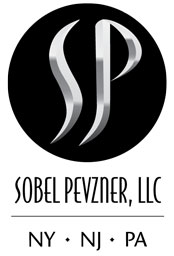
With foodborne illnesses affecting 48 million Americans and causing 3,000 deaths annually, retailers must rigorously protect themselves from liability.
By Curtis Sobel
In 1906, Upton Sinclair authored one of the great American novels: “The Jungle.” Although he intended to tell the story of an immigrant family working in the Chicago meatpacking industry, what truly caught the attention of the American public – and ultimately Theodore Roosevelt, then president of the United States – were the industry’s health violations and unsanitary practices.
President Roosevelt then commissioned Charles P. Neill and James Reynolds to investigate the conditions of the meatpacking industry. When their report was ultimately released to the public, pressure from the electorate led to the passage of the Meat Inspection Act and the Pure Food and Drug Act (PFDA), both of 1906. The PFDA led to the establishment of the Bureau of Chemistry, since renamed the Food and Drug Administration (FDA).
It then took 32 years for the first major piece of food safety legislation to be passed by Congress – the 1938 Food, Drug and Cosmetic Act. Largely through the efforts of women’s groups, the United States enacted, for the first time, standards for food branding and safety. Under this landmark legislation, food would be considered misbranded if it represented itself as a standardized food unless it conformed to that standard. The law also provided for three kinds of food standards: identity, quality and volume. While this all sounds quite rudimentary, one only need read Sinclair’s novel to understand that in the absence of such basic enabling legislation, anarchy ruled the day in food production and distribution.
So why the history lesson to start this piece? Well, the realization that much has transpired in the food industry (i.e. the advent of consumer available refrigeration in the 1930s), yet truly impactful food safety legislation still did not occur for another 75 years after the 1938 law went into effect. The new law, titled the FDA Food Safety Modernization Act was signed into law by President Barack Obama in 2011.
Food Liability and Risk Avoidance
I make my living in the day-to-day litigation of food and product liability matters, and legislation is by far only a small piece to the puzzle. Practical risk avoidance and a clear understanding of the source of most food liability cases is where we must focus the discussion. With the Centers for Disease Control estimating foodborne illnesses affect 48 million Americans or one in six annually, with 3,000 deaths linked to foodborne causes, it is not hard to see why the plaintiff’s bar makes this area of the law one to exploit.
Tainted food product: Three elements are present in every food liability lawsuit: food which was defective, tainted or adulterated; injury resulting from its consumption or contact; and proof of purchase or acquisition. The first of these three elements must be further broken down into two separate categories – foreign object and foodborne pathogens. Under the reasonable expectation doctrine, objects contained within food are deemed not reasonably expected if they are not common to the food, i.e. screw or nail found in a doughnut, finger in chili, glass in hamburger (all taken from cases I’ve defended). In contrast, naturally occurring items such as bones in a fillet of fish or boneless chicken do not generally lead to liability as they are reasonably expected to be present.
Fraud alert: Generally speaking, if the foreign object contained within the allegedly tainted food item did not go through the same cooking process as the food item itself, it was likely added by the plaintiff after final sale was completed. In the infamous finger in the Wendy’s Chili case, it was determined that the finger was added to the chili by the claimant because it had not gone through the chili cooking process. So, if the item at issue is salted nuts or pickled jalapenos, and the lizard or mouse is neither salted nor pickled, consumer fraud should be considered.
Foodborne pathogens, however, present an entirely different challenge to the food liability attorney and thus their clients. The big three in this category are E. coli, salmonella and lysteria. Cases based upon the presence of foodborne pathogens are generally more difficult to prove given the incubation periods that typically extend beyond the time frame in which the food is either entirely consumed or discarded. E. coli, also referred to as 0157:H7, typically incubates over a 24- to 48-hour time frame. Proof of E. coli poisoning requires medical testing of the patient and mere sickness coincident in time to consumption is legally insufficient to establish liability. Thus, where a consumer claims to have experienced an immediate onset of stomach pain or other “food poisoning” type symptoms, it is almost never the case that the restaurant or food purveyor last visited by the consumer is to blame. A thorough understanding of foodborne pathogens and their incubation periods is essential to the proper defense of these types of claims. Because injuries run the gamut from ordinary dyspepsia to fetal death, it is essential that the food liability defense attorney have an understanding of the science of foodborne pathogens in order to properly represent the client.
Food allergies. No area of food liability has gained more notoriety in recent years than food allergies.
Applicable to all foods labeled after Jan. 1, 2006, but only to foods regulated by the FDA, the Food Allergen Labeling and Consumer Protection Act of 2004 requires that all labels clearly identify the source of all ingredients that are or are derived from the “big eight”: milk, eggs, fish, crustacean, shellfish, tree nuts, peanuts, wheat and soybeans.
In most states, all companies in the chain of distribution of food products – including those involved solely in the manufacture of components or additives – bear potential responsibility to the endpoint consumer. Each link in the chain of distribution must ensure its own safe food handling practices. But, of equal importance is the establishment of “upstream” liability and indemnity should another company in the chain cause the introduction of foodborne pathogens or foreign objects. The retailer must be able to look upstream to the distributor and the distributor to the manufacturer or grower for indemnification and a defense. Vendor contracts and insuring agreements must be properly drafted and enforced, through litigation, if necessary, to ensure that the cost of a defense and, if valid, payment of damages land on the responsible party to the fullest extent possible.
News reports regarding food recalls of Virginia Soybeans, Washington State Yogurt, Texas Avocados and Minnesota Ground Beef were recently published by a single Internet source on only one day in November 2014. As a defense attorney heavily involved in the food industry, it is clear that the “hard” costs associated with food recalls can be exponentially increased by the worldwide dissemination of such information, especially if it goes viral.
With the advent of greater legislative power and oversight, the need for proactive food handling policies, better standard operating procedures and enhanced risk management techniques is obvious. With the cost of class action lawsuits and product recalls being so great, the best advice I can give is to get ahead of the risk and handle your food liability issues as carefully as you handle your food.
Curtis Sobel is the senior partner and founding member of the Sobel Pevzner, LLC. LLC. The firm principally practices in the area of premises liability, food and product liability, trucking and transportation defense in New York, New Jersey and Pennsylvania. Sobel is also a frequent lecturer and instructor on topics including risk management, premises and product design, claims processes and procedures, and litigation avoidance. More information is available at www.sobellawgroup.com.


